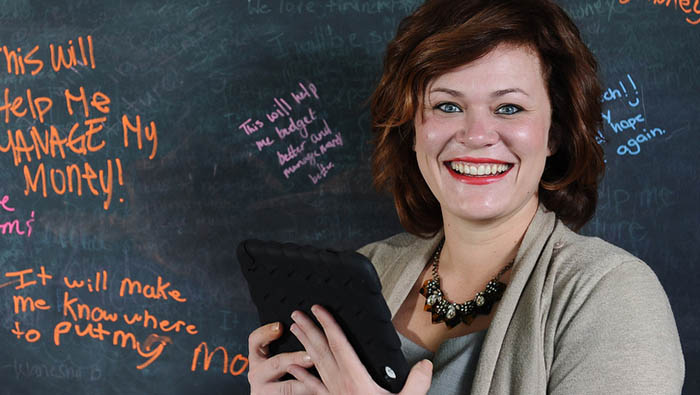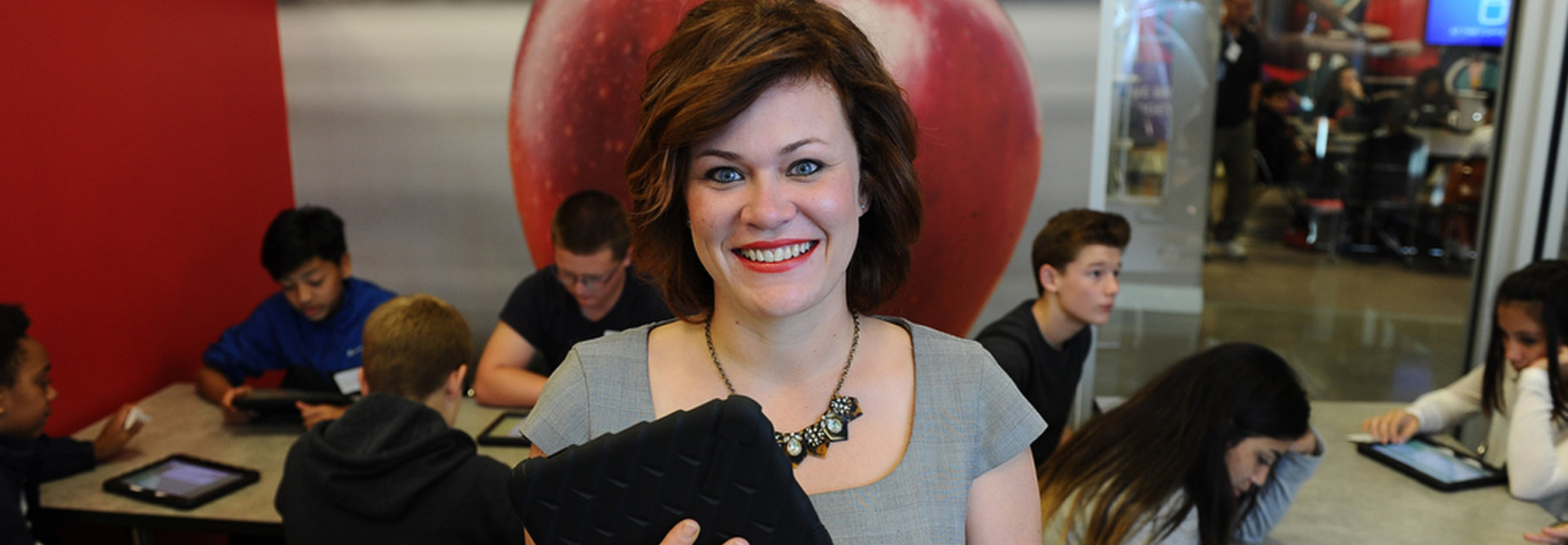Nonprofits Enrich Education with Technology
How do community-oriented nonprofit organizations get their clients even more engaged with their programs? With technology. Creative and strategic use of the right IT within an already successful program can significantly ramp up engagement and results.
Nonprofit Junior Achievement USA has been fostering work readiness, entrepreneurship and financial literacy skills in K–12 students for nearly 100 years.
In 2003, Junior Achievement launched JA Finance Park, a teacher-led course that uses classroom curriculum and experiential learning to teach middle school students about personal finance and budgeting.
The highlight of the multiweek program is the final day, when students travel to a JA Finance Park facility for a simulated “real-world” experience. Each student becomes a financially responsible “adult” for the day, with a fictional job, credit score and family situation. The students do their research and then visit fictional banks, car dealers, government offices and malls to apply for loans, make purchases and pay bills — all the while learning to manage their budget.
“I hear a lot of students at the end of the day, saying, ‘Wow, I had no idea. Thanks, Mom and Dad!’ ” laughs Sarah Dohl, vice president of communications for Junior Achievement of Greater Washington, which teaches nearly 25,000 local students with two (and soon three) JA Finance Park facilities. “It’s very hands-on and experiential, which helps students really get the concepts we’re trying to teach.”
Life Lessons Powered by Digital Experiences

For JA Finance Park, Junior Achievement used to rely largely on paper-and-pencil tasks, meaning hands-on “too often meant heads-down,” says Sharon Lents, vice president of field program services for Junior Achievement USA. Students had to work out calculations — and then frequently erase and rework those calculations as they completed their budget.
“It was stressful because the focus too often tended to be on the math calculations and getting it right when what we really want is for them to fully understand the decisions they are making and the impact of those decisions on their budget and lifestyle,” Lents says.
Percentage of students in grades 4–12 who say tablets make learning more fun
SOURCE: Harris Poll, “Pearson Student Mobile Device Survey,” June 2015
To redirect that focus, Junior Achievement decided to bring technology into the mix. In 2014, the organization purchased several thousand iPad devices and Samsung Galaxy tablets for use within 26 of its regional affiliates and built a custom application that digitally mimicked, and improved upon, the Finance Park budgeting simulation.
“Going digital has made the program much more intensive and impactful for the students,” says Susan Luu, senior vice president of business improvement for Junior Achievement USA, adding that the JA Finance Park program reached more than 265,000 students in the 2014–2015 school year.
The Right Tools for Skill Building
Pioneer Center for Human Services, a nonprofit that serves individuals with intellectual or developmental disabilities in McHenry County, Ill., was already using desktop computers and iPad devices in their group homes to help their clients become more independent and achieve goals such as making friends, improving their fine motor skills and getting a job. However, the tools they had weren’t always the best fit.
“Some of the folks we serve can really struggle using a traditional mouse and keyboard, and though the touch screen on the iPad devices worked better for them, the screen was really too small,” explains Jackie Wells, president and CEO of Pioneer Center. “We needed something that was broader and more comprehensive that all of our clients could make use of.”
Pioneer Center’s leadership team researched and discovered the HP Sprout, a relatively new and unique computing platform that provides the best features of a traditional PC and a tablet — and, as far as Pioneer Center is concerned, improves on both. They have since purchased and implemented 18 Sprouts in two computer labs and some group homes and are working to secure funding for another 10 Sprouts.
“It’s something that all of our clients can use in some fashion or another,” says Vance Christy, the organization’s IT manager, noting that a key feature is the “pad,” a large, all-in-one touch screen, scanner and keyboard that sits in front of the monitor.
“I think what really bridged the gap here is that they can utilize the pad and still work in a natural position with their head down, all the while manipulating the desktop off of the pad,” Christy explains.
The Sprout offers a virtual keyboard to utilize more traditional applications such as Office 365 and video chat, but most Pioneer Center clients start off by using some of its more tactile programs like coloring, origami and puzzles.
“Some of the cool tools it brings forward are providing our clients the ability to fine-tune their motor skills, as well as their visual skills, gross motor skills and hand-eye coordination, and expand their creativity,” Christy says. “They can see the pictures and follow the arrows and manipulate it with their fingers. And they seem to be a lot less intimidated and more eager to use this tool because the color, the music and the way the apps are displayed really make it jump off that pad for them.”
Girl Power Fuels Operation SMART
Girls Inc., a New York–headquartered nonprofit focused on inspiring girls across the U.S. and Canada, has utilized technology for nearly 20 years.
“In addition to a holistic approach to working with girls to ensure they grow up healthy, educated and independent, we believe it is important to use technology to assist in making this happen,” says Judy Vredenburgh, president and CEO of the organization.
Advances in mobile technology allow Girls Inc. to introduce more girls to new career opportunities in science, technology, engineering and math (STEM) professions. Girls Inc. does this through Operation SMART, which features a series of programs and activities designed to bolster girls’ skills and enthusiasm for STEM programs.
For example, middle and high school girls attending the Eureka! Summer Camp use iPad devices to program video games, measure rocket speed and trajectory and record results. Another program, Build IT, focuses on design and technology using math and engineering skills.
Girls Inc. affiliates routinely use tablets and iPad devices to turn any space into a virtual computer lab, and they leverage these assets, along with Wi-Fi connectivity, to enable girls to participate in the Google Made with Code project to learn how to code.
“Girls Inc. teaches girls how technology and applications can help people and their communities,” says Vredenburgh. “Girls now realize that technology is even more powerful than downloading the latest chat app for their phone and that it can be used in so many ways they never thought of.”








